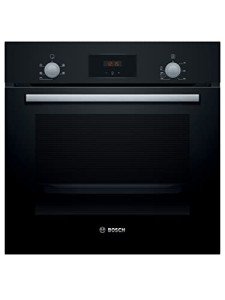5 Killer Quora Answers To Builtin Oven
페이지 정보

본문
The Comprehensive Guide to Built-In Ovens: Features, Benefits, and FAQs
Built-in ovens are a popular option for contemporary kitchens, providing adaptability, efficiency, and a streamlined design that incorporates seamlessly into cabinets. This article will dive into the numerous elements of Built in ovens electric-in ovens, including their features, advantages, installation choices, maintenance ideas, and answers to commonly asked questions.
What is a Built-In Oven?
A built-in oven is designed to be set up within kitchen cabinets and is offered in various setups, such as single or double ovens. Unlike freestanding ovens, built-in models provide a streamlined look and use more versatility in kitchen design. They are available in electric, gas, and steam options, accommodating a variety of cooking preferences.
Functions of Built-In Ovens
Built-in integrated ovens for sale are packed with features that enhance cooking experiences. Here are a few of the most common functions to think about:
| Feature | Description |
|---|---|
| Self-Cleaning | Many models include a self-cleaning function that burns off residue at high temperature levels, streamlining upkeep. |
| Convection Cooking | This function uses a fan to circulate hot air, cooking food more evenly and quickly. |
| Smart Technology | Some ovens come geared up with Wi-Fi connectivity, allowing users to control the oven remotely via mobile phone. |
| Multiple Cooking Modes | Consist of alternatives such as baking, broiling, roasting, and air frying, supplying flexibility for various dishes. |
| Temperature Probe | Keeps an eye on the internal temperature of food, ensuring perfectly cooked meals each time. |
| Smooth Design Options | Available in different surfaces (stainless-steel, black, white) to match kitchen decoration. |
Advantages of Built-In Ovens
The installation of a built in ovens-in oven brings various benefits to any kitchen:
- Space Efficiency: Built-in ovens integrated optimize kitchen area, offering a tidy and organized appearance without sacrificing functionality.
- Boosted Cooking Performance: With advanced features like convection cooking and accurate temperature controls, built-in ovens often outperform standard designs.
- Design Flexibility: These ovens can be installed at eye level, permitting easy access without flexing down, builtin Oven which can be especially beneficial for individuals with physical restrictions.
- Enhanced Resale Value: A properly designed kitchen with top quality built-in appliances might appeal to potential purchasers, boosting overall residential or commercial property worth.
- Personalization Options: Many brands provide customizable designs that fit the particular measurements and visual of individual kitchens.
Setup Options
When picking a built-in oven, understanding the setup alternatives is crucial. Here are the most common setups:
Single Built-In Oven: Ideal for smaller sized kitchens, these systems use sufficient space to cook a variety of meals simultaneously, ideal for daily cooking.
Double Built-In Oven: Best fit for devoted cooks and large families, double ovens enable for simultaneous cooking at two different temperatures, ideal for meals that need diverse cooking methods.
Mix Steam and Oven: A hybrid service that combines the advantages of traditional baking with steam cooking. This choice is exceptional for maintaining moisture in foods, making it perfect for baking bread or roasting meats.
Maintenance Tips for Built-In Ovens
Maintaining a built-in oven is important for its durability and ideal performance. Here are some practical maintenance tips:
Regular Cleaning: Use the self-cleaning function when needed, and clean down the outside and interior surface areas regularly to avoid grease buildup.
Inspect the Seals: Inspect the oven door seals for any wear or damage to make sure proper insulation and cooking efficiency.
Temperature Calibration: Occasionally check the temperature precision using an oven thermometer, particularly if cooking times seem longer than typical.
Ventilation: Ensure adequate ventilation around the intergrated oven and hob to avoid getting too hot, especially for built-in models that may be surrounded by kitchen cabinetry.
Frequently Asked Questions About Built-In Ovens
1. Are built-in ovens more costly than freestanding models?Yes, built-in ovens tend to be more costly due to their design, installation requirements, and additional features. However, their advantages can justify the expense in the long run.
2. Can you set up a built-in oven yourself?While some convenient people might attempt to set up a built-in oven, it is suggested to hire a professional to make sure proper installation, ventilation, and safety standards.
3. What is the typical life expectancy of a built-in Builtin oven?The normal life expectancy of a built-in oven is around 10 to 15 years, depending upon use and upkeep. Regular care can assist extend its durability.
4. Are built-in ovens energy efficient?Lots of contemporary built-in ovens are designed with energy effectiveness in mind, including functions like insulation and exact temperature controls that might decrease energy usage compared to older models.
5. Can a built-in oven be repaired if it breaks?Yes, built-in ovens can often be repaired. It is advisable to get in touch with a certified specialist for medical diagnoses and repairs to guarantee safety and compliance with warranty arrangements.
Built-in ovens are an excellent addition to any contemporary kitchen, offering a mix of style, functionality, and advanced cooking features. With the right understanding about their functions, benefits, and upkeep, homeowners can make educated options to improve their cooking experiences. As kitchen design patterns continue to develop, the built-in oven remains a staple for those seeking to blend looks with effectiveness in their cooking spaces.

- 이전글Could Diagnose ADHD Be The Key To 2023's Resolving? 25.05.19
- 다음글Test: How Much Do You Know About Who Diagnoses ADHD? 25.05.19
댓글목록
등록된 댓글이 없습니다.
